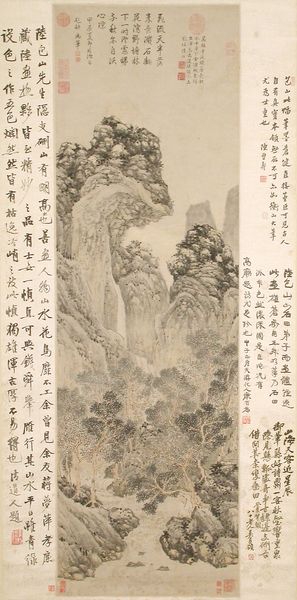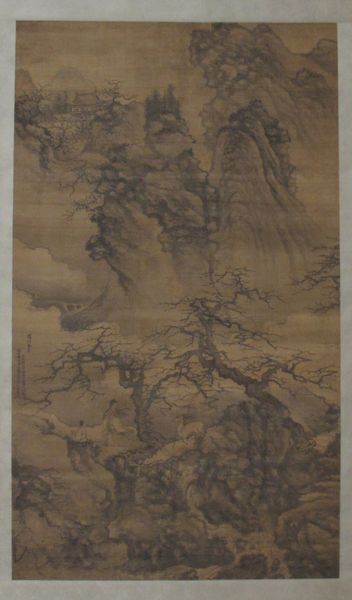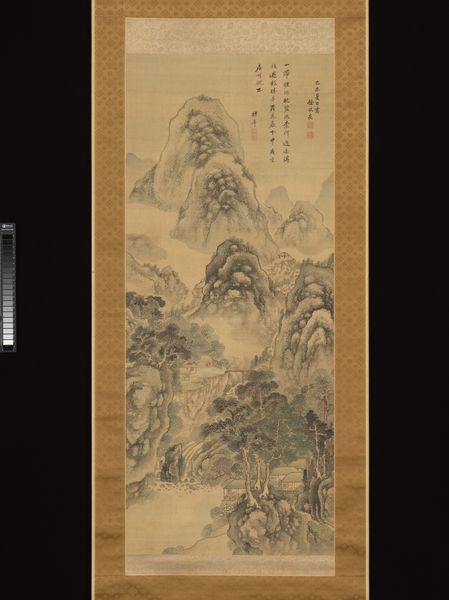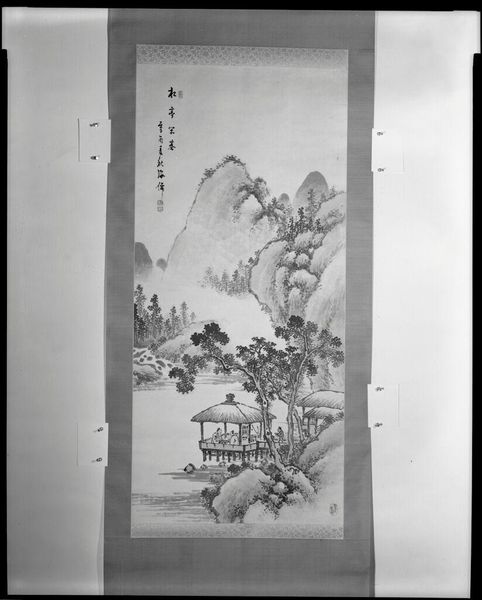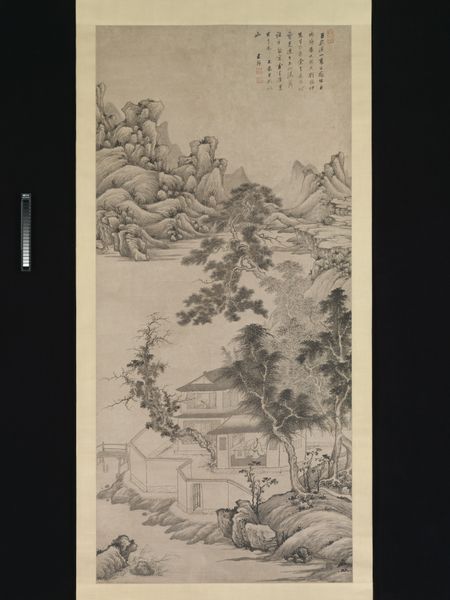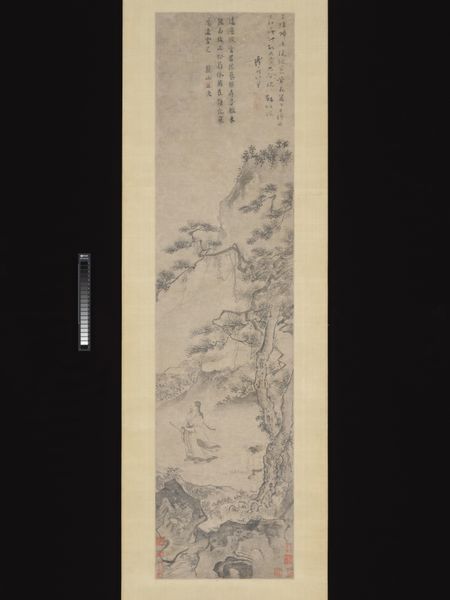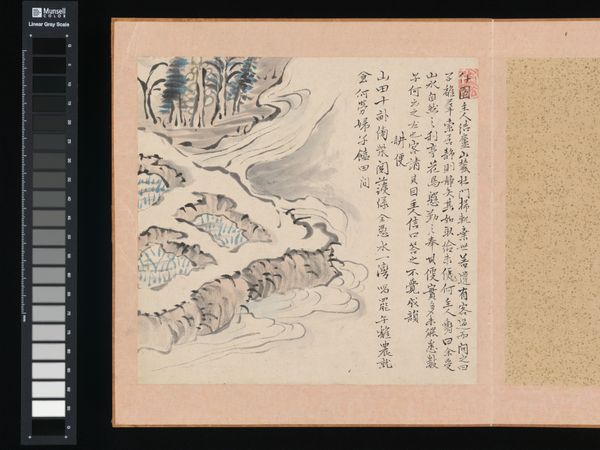
paper, ink-on-paper, hanging-scroll, ink
#
toned paper
#
asian-art
#
landscape
#
paper
#
ink-on-paper
#
hanging-scroll
#
ink
#
china
#
calligraphy
Dimensions: 45 15/16 x 15 13/16 in. (116.68 x 40.16 cm) (image)
Copyright: Public Domain
Editor: So, here we have Shen Zongqian's "Living in the Mountains," a hanging scroll from 1786, created with ink on paper. The muted tones and detailed brushwork give it a very contemplative mood. How do you approach a piece like this, with its combination of landscape and calligraphy? Curator: I'm immediately drawn to the materials and the process. Consider the ink: its preparation, the sourcing of materials for the paper. This isn't just about artistic expression; it's about the entire network of labor that makes the artwork possible. Think of the paper's production, how it supports this 'high art'. What kind of social hierarchy made art creation such as this possible? Editor: That's interesting, I hadn’t thought of the labor involved, just the artistry. What about the way the ink is actually applied? Curator: Precisely. The varying densities of ink—think about how they were made available in the process of creating it, controlling moisture, time, pressure on the brush. Does that remind you of anything about Chinese culture, perhaps? It strikes me how this piece almost democratizes those processes. Landscape painting traditionally served elites, right? But now we can think more deeply about what went into the artwork to allow for landscape painting itself. It becomes almost subversive, if that was his goal. Editor: So, by focusing on the materials and the act of creation, we can uncover the socio-economic context of the work. Curator: Exactly. We're not just looking at a pretty picture of mountains; we're examining a material testament to a specific time and place. And the skills required to make something beautiful! The hours that were involved, paid and unpaid. Editor: That really changes how I see it. It’s more than just aesthetic; it’s a record of its own making and a glimpse into the systems of its time. Curator: Agreed, understanding these layers offers a far richer, and, dare I say it, more grounded experience of the artwork. It allows us to see beyond the surface and acknowledge the multitude of hands and processes involved.
Comments
minneapolisinstituteofart almost 2 years ago
⋮
Shen Zongqian was born in Wucheng, the modern city of Huzhou in Zhejiang province. While Shen only earned the first literary degree, he became a well-known scholar, calligrapher, and painter. In 1781, he published the Shenzhou Xue Hua Pian, an influential treatise on painting in which he passionately defends the conservative or orthodox view of landscape painting. In it, he writes: Many of those who look at art do not really understand it. They decry the orthodox style and praise those who follow the vogue of the day. The struggling artist who does not stand on his own is easily tempted to go with the crowd...One must always keep in mind what a painting is and try not to forget it and strive to perfect oneself and in this way, come near to the great masters (of the Song and Yuan dynasties). Typical of the orthodox style, the brushwork of Shen's painting is methodically applied using a limited range of textures and tonalities serving to unify the various parts of the composition.
Join the conversation
Join millions of artists and users on Artera today and experience the ultimate creative platform.
